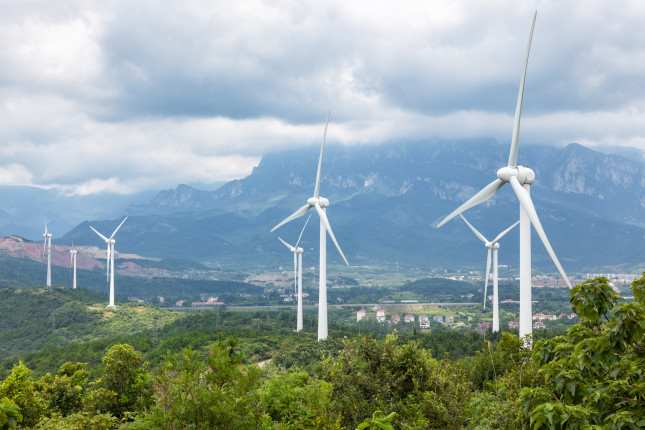-
“Green” China on the Global Stage
July 22, 2021 By Judith Shapiro
Young Africans are flocking to Confucius Institutes to learn Chinese and throw in their lot with the Asian superpower. The “Chinese Dream” is leaving the American Dream in tatters in much of the developing world. Many developing countries see partnerships with China as the route to their future success, especially in an era in which the United States has turned inward and is apparently a less generous and reliable partner. However, anti-Chinese sentiment is also intensifying. Chinese loans and investment are welcome, but recipients are also unsure about the environmental and social implications of partnering with such an untested player.
China’s Belt and Road Initiative (BRI) inspires a kaleidoscopic and conflicting array of views of the benefits offered and threats posed. The BRI, an umbrella term for China’s outward investment focusing on infrastructure and trade linkages, offers enormous possibilities and grave risks. Some vulnerable states like Sri Lanka are rethinking a relationship that is leaving them in an uncomfortably dependent position, and China’s close friends—like Pakistan—are experiencing misgivings. Some 80 percent of China’s BRI energy investments has been in coal and oil, thereby complicating China’s trajectory toward net-zero emissions. Meanwhile, extractive projects like mining, oil and gas fields, dams, waterways, and paper and pulp mills have caused conflicts with local communities and indigenous groups throughout the developing world. China’s massive economic footprint is transforming landscapes worldwide at a dizzying pace, with enormous implications for climate change as well as for ecosystems, biodiversity, and human livelihoods.
Paths to a greener belt and road
As President Xi’s administration promises to go “green” in overseas investments, it is essential that the Chinese state export its domestic low-carbon technologies and policies. The Belt and Road Initiative is an opportunity for China to develop and spread renewable energy infrastructure, but the program also risks continuation of carbon-intensive, destructive projects that lock in global temperature rise and harm ecosystems. Chinese investors have come under international criticism for their financing of coal-fired power plants, big dams, pipelines, high-speed rail and highways, and deep-water ports that have tremendous negative environmental impacts, from increased carbon emissions to habitat fragmentation.
The hyperglobalization of the Anthropocene era in which we live has accelerated with the arrival of China on the international scene. If we agree that there are limits to economic growth and to the earth’s resources, then this intensified globalization is deeply problematic. We appear to be headed for climate disaster and biodiversity collapse unless we find different ways of organizing global commerce and consumption.
Assuming that economic globalization is an engine that cannot be stopped, we must ask whether China has an obligation to hold partners on the Belt and Road to a higher standard. When a recipient country asks for a coal-fired power plant, China should offer alternative investment in wind and solar. When a country asks for a big dam, China should use rigorous social and environmental screens to evaluate the project and withdraw from the project if it does not meet standards. When a country’s leadership wishes to exploit mineral resources, China should engage with local communities and indigenous groups to gain their support and be prepared to decline the project without it.
With China’s advanced technological experience in wind and solar power, China is well placed to help less developed countries to “green” their energy supplies and offer the win-win solutions that government propaganda promotes. A positive example can be found in Cambodia’s dialogue with Beijing to attract renewable energy investments to turn the country into the Solar Belt of Southeast Asia.
China is on a steep learning curve. There is a slim window of opportunity to make the country’s contribution to global environmental change more sustainable as the planet confronts multiple thresholds and tipping points. To do so, Chinese overseas investment and lending projects must embrace an economic, social, and environmental model that more deeply embodies the ideals of China’s commitment to ecological civilization.
Rebuilding U.S.-China climate relations
Climate change is a global challenge. It makes little sense to address it country by country as if the planet were a jigsaw puzzle, or to imagine that states can independently achieve low-carbon goals without working together. While the United States might unilaterally meet its declared climate objectives without China’s cooperation, that “success” would be meaningless unless China and other major carbon emitters also decarbonized to meet their Paris commitments and more. Moreover, the chances of impactful climate action are greater if both countries actively cooperate through information-sharing, investment in green technology, the promotion of green trade, and collaboration on cleaning up “dirty” industries like cement, steel, and coal domestically and overseas.
The potential for working together is vast, at many levels of society, not only at the top-level of Beijing and Washington. Scientists, academics, corporate leaders, municipal and provincial policymakers, and ordinary citizens are eager for the task. The damage done to these institutional and people-to-people relationships during the past U.S. administration should be repaired. Academic and professional exchanges should be fully revived and supported. The tendency to demonize the “other” that currently characterizes U.S.-China relations is deeply unfortunate and obscures the fact that despite intractable conflicts on a host of issues, our shared interest in reducing carbon is profound.
China is the world’s leader in installed renewables—in 2020 adding nearly 72 gigawatts of wind power and 40 GW of solar. Today, China has more than double the installed photovoltaics (240 GWs) than the United States (100 GWs). Nevertheless, China still feels enormous pressure to meet many of its energy needs through coal as its supplies are plentiful and other energy sources insufficient to meet demand. Understandably, the United States criticizes China for its soaring carbon emissions. However, much U.S. consumption is of goods manufactured in China with carbon-based energy, goods that are transported to the United States using fossil fuels. Responsibility for China’s emissions belongs to end-consumers as well as producers. More explicit recognition of these basic dynamics of the global political economy could be a critical first step toward finding more even-handed solutions.
With the rise of China and perceived decline of the United States on the international stage, U.S.-China relations are in a fragile phase. It is critical that both sides navigate their conflicts wisely. Collaboration on climate should not be hostage to disagreements in other areas. Rather, climate collaboration shows promise for alleviating tensions on a range of other issues. It can revive avenues for communication and, despite our significant disagreements on other matters, help to normalize what has generally been an active and productive relationship.Judith Shapiro directs the dual Masters in Natural Resources and Sustainable Development at the School of International Service at American University. She was one of the first Americans to teach in China after US-China relations were normalized in 1979 and has been involved with China ever since. Professor Shapiro is the author, co-author or editor of ten books, including China Goes Green: Coercive Environmentalism for a Troubled Planet (with Yifei Li, Polity 2020), China’s Environmental Challenges (Polity 2016), Mao’s War against Nature (Cambridge 2001), and Son of the Revolution (with Liang Heng, Knopf 1983).
Sources: CNBC, IIEFA, Reuters, Yale 360.
Lead Image Credit: Wind farm at the foot of Lushan Mountain, China, courtesy of chuyuss/Shutterstock.com.
Topics: China Environment Forum
 A Publication of the Stimson Center.
A Publication of the Stimson Center.




